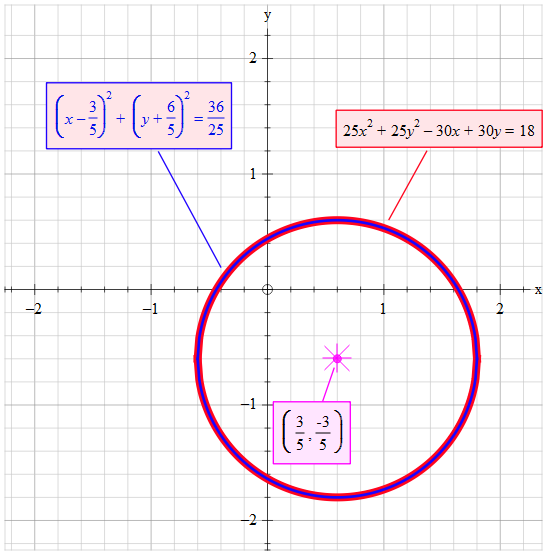How do you decide whether or not the equation below has a circle as its graph If it does, give the center and the radius. If it does not, describe the graph #25x^2 +25y^2- 30x+ 30y -18 =0#?
2 Answers
The eqn. represents a circle having centre
Explanation:
The General Second Degree Equation in
In the event, its Centre is
In our Example,
So, the eqn. represents a circle having centre #(15/25,-15/25), i.e.,
Enjoy Maths.!
Yes it is an equation of a circle.
Explanation:
Given:
If this an equation of a circle then we should be able to manipulate it back into standard form of
~~~~~~~~~~~~~~~~~~~~~~~~~~~~~~~~~~~~~~~~~~~~~~~
I spot that the standard form is part of the process for completing the square. Lets investigate that.
Divide throughout by 25 to get rid of the coefficients for
Write as:
Completing the squares
Thus the centre as at point 1
The radius is
~~~~~~~~~~~~~~~~~~~~~~~~~~~~~~~~~~~~~~
Is the same as:
Thus it is a circle.


